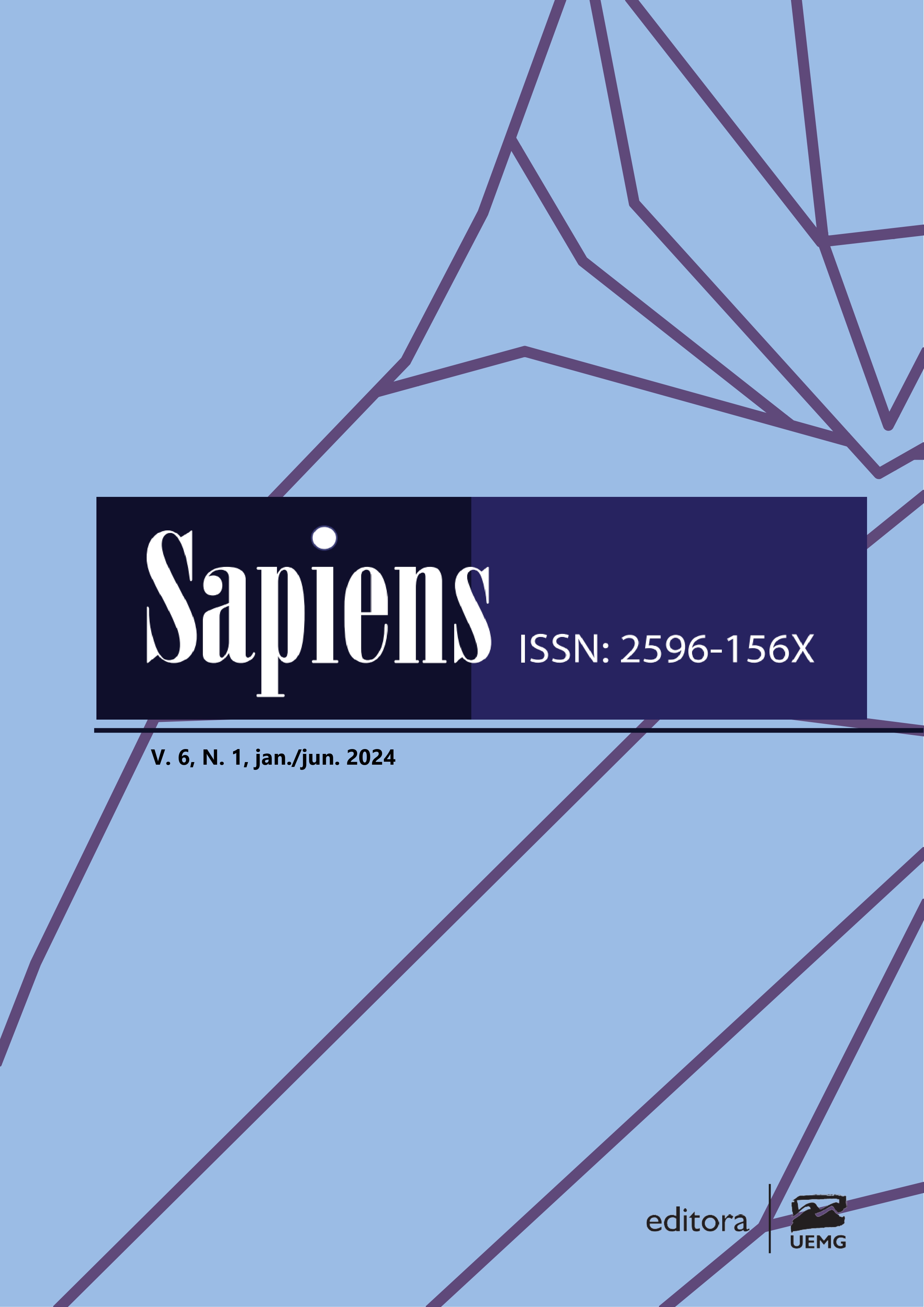IRACEMA THROUGH MULTIPLE PERSPECTIVES:
LITERARY LITERACY BASED ON A MULTIMODAL DIDACTIC SEQUENCE
DOI:
https://doi.org/10.36704/sapiens.v6i1.8983Keywords:
Literary Literacy, Multimodality, Retextualization, Iracema.Abstract
Documents that guide Basic Education in Brazil advocate that the teaching of Literature needs to be supported by pedagogical practices that include reader-literary text dialogue, since literary reading is essential not only for students' academic development, but also for their formation as critical, empathetic and creative individuals in a plural society. The aim of this article is to present a proposal for applying the theoretical-methodological model developed by Cosson (2006) to promote literary literacy. In this model, Cosson (2006) presents a basic sequence, which consists of four stages: motivation, introduction, reading and interpretation of the literary text. Based on this methodology, this article looks at literary literacy through a Didactic Sequence for reading Iracema: Legend of Ceará and multimodal retextualizations of the novel. For the basis of our study, we have taken the works of Soares (2002) and Cosson (2006) as our theoretical basis for discussing the concepts of literacy and literary literacy. Regarding the concept of multimodality, we draw on the reflections of Kress and Van Leeuwen (2001). Also, as this research deals with the process of retextualization, we used the studies of Dell'Isola (2007), Marcurschi (2001) and Matencio (2002). With this work, we emphasize that multimodal retextualizations broaden the possibilities of interpretation and expression for students, making the literary experience more dynamic and accessible. They reflect the diversity of contemporary forms of communication and are fundamental to a literacy that encompasses multiple languages and media.
References
ALENCAR, J. de. Iracema: lenda do Ceará. São Paulo: Ateliê Editorial, 2016.
BRASIL. Base Nacional Comum Curricular. 3ª versão. Brasília, DF: Ministério da Educação, 2017
BRASIL, Secretaria de Educação Fundamental. Parâmetros Curriculares Nacionais: Língua Portuguesa. V. 2. Brasília: Secretaria de Educação Fundamental, 1998.
BRASIL, Secretaria de Educação Básica. Orientações Curriculares para o Ensino Médio: Linguagens códigos e suas tecnologias. Brasília: MEC / SEB, 2006.
BRASIL. Lei de Diretrizes e Bases da Educação Nacional: lei nº 9.394, de 20 de dezembro de 1996, que estabelece as diretrizes e bases da educação nacional. – 2. ed. – Brasília: Senado Federal, 2018.
CANDIDO, A. O direito à literatura. In: CANDIDO, A. Vários escritos. São Paulo: Duas Cidades, 1995.
COSSON, R. Letramento literário: teoria e prática. São Paulo: Contexto, 2006.
COSSON, R. O espaço da literatura na sala de aula. In: PAIVA, A. et al. (Coord.). Literatura: ensino fundamental. Brasília: Ministério da Educação, Secretaria de Educação Básica, 2010.
DELL’ISOLA, R. L. P. Retextualização de gêneros escritos. Rio de Janeiro: Lucerna, 2007.
FREIRE, P. Pedagogia da autonomia. Rio de Janeiro: Paz e Terra, 1987.
JOUVE. V. Por que estudar literatura?. São Paulo: Parábola, 2012.
KRESS, G.; VAN LEEUWEN, T. Multimodal Discourse: The Modes and Media of Contemporary Communication. London: Arnold, 2001.
MARCUSCHI, L. A. Da Fala para a Escrita: Atividades de Retextualização. São Paulo: Cortez, 2001.
MARCUSCHI, L. A. Gêneros Textuais: definição e funcionalidade. In: DIONISIO, A.; MACHADO, A.; BEZERRA, M. (org.). Gêneros Textuais e Ensino. Rio de Janeiro: Lucerna, 2005.
MATENCIO, M. de L. M. Atividade de (Re)textualização em práticas acadêmicas: um estudo do resumo. Scripta, [S.l.], p. 109-122, out. 2002. Disponível em: <http://periodicos.pucminas.br/index.php/scripta/article/view/12453>. Acesso em: 25 maio. 2024.
ROJO, R. H. R; BARBOSA, J. Hipermodernidade, multiletramentos e gêneros discursivos. São Paulo: Parábola Editorial, 2015.
SOARES, M. Letramento: um tema em três gêneros. Belo Horizonte: Autêntica, 2002.








